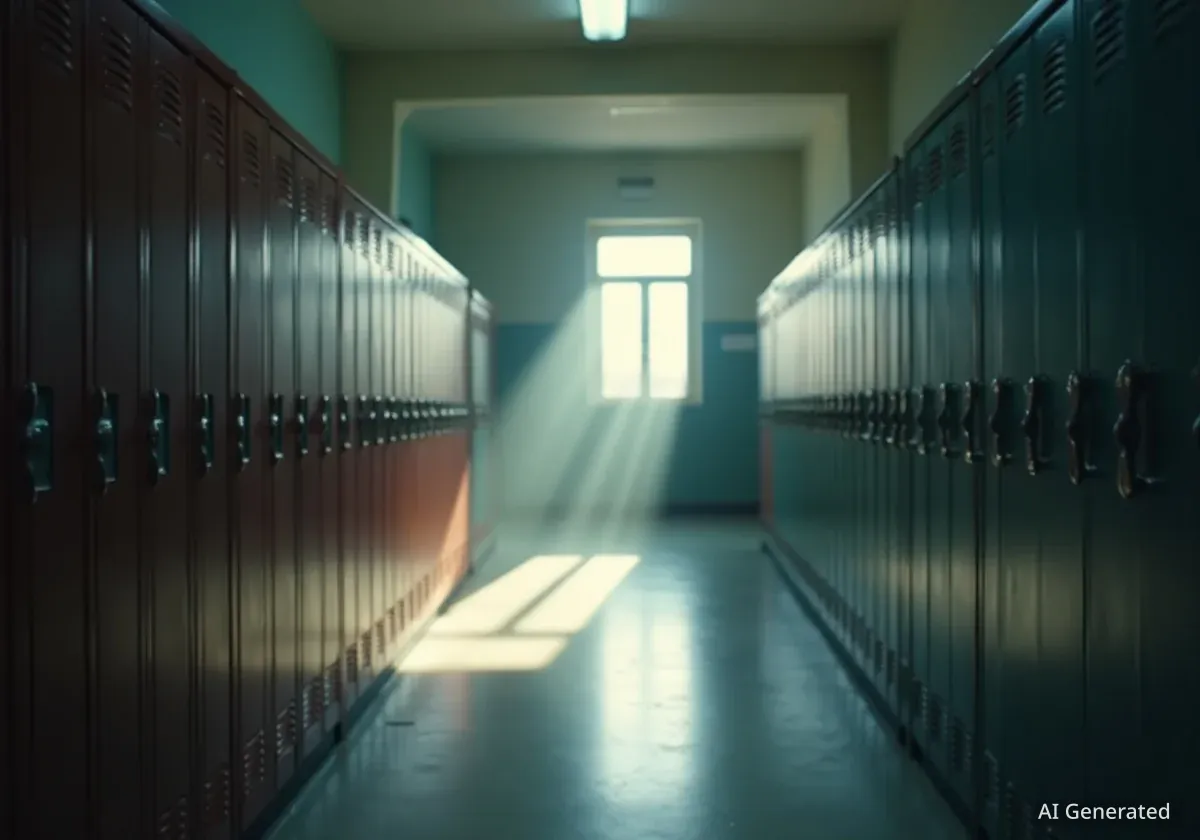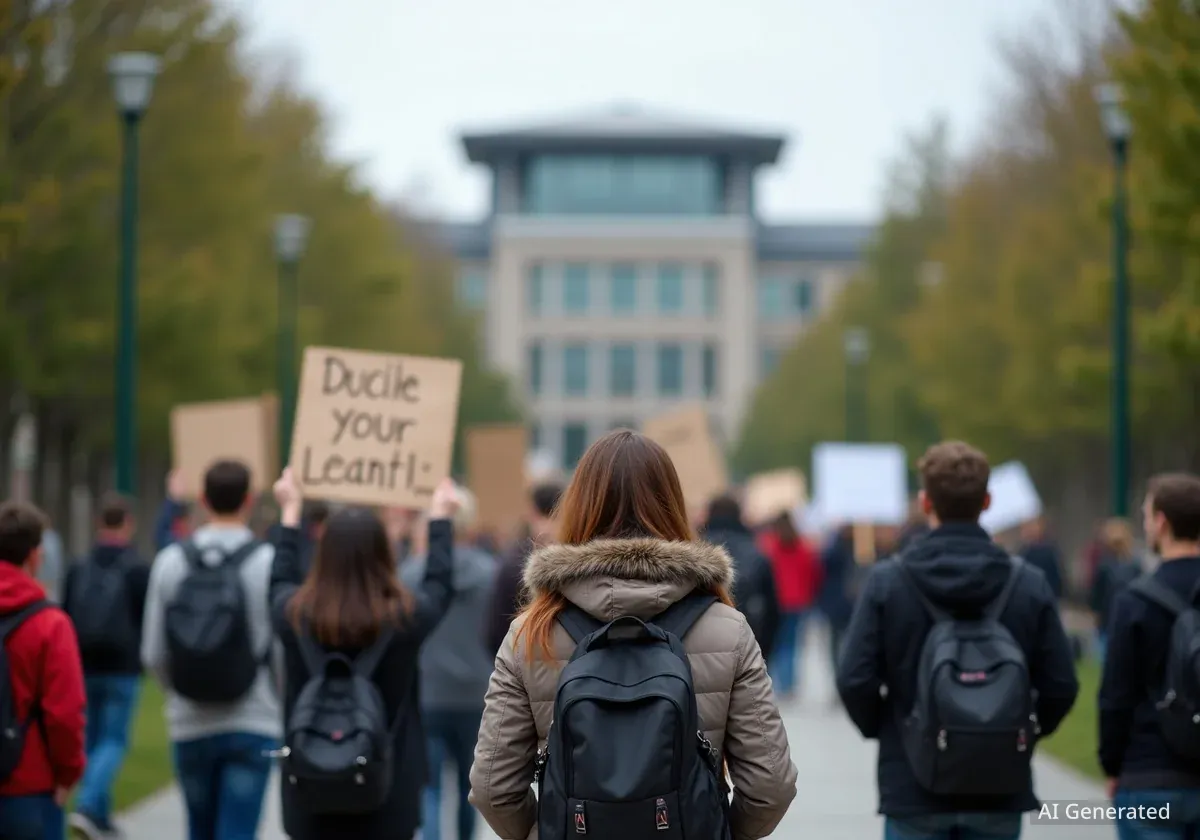Restrictions on books in U.S. public schools have become so frequent that they are now a routine part of operations in some districts, according to a new report from the free speech organization PEN America. The group's findings indicate a significant shift in how educational materials are managed, with challenges moving from isolated local incidents to coordinated state and federal actions.
Key Takeaways
- A PEN America report states book restrictions are now a "routine and expected part of school operations" in some areas.
- In the 2024-25 school year, over 3,750 unique titles were banned in 87 U.S. school districts.
- Over the past four years, nearly 23,000 instances of book bans have been recorded across 45 states.
- The focus of these restrictions has expanded from local school boards to state legislatures and federal agencies.
- Books with themes of race, racism, or LGBTQ+ characters remain the most frequently targeted for removal.
The Normalization of Book Restrictions
According to PEN America, the consistent and widespread nature of book challenges over the past four years has led to a sense of desensitization among the public. What was once a rare event has become a common occurrence in many communities.
"There’s this numbness we have," stated Kasey Meehan, director of PEN America’s Freedom to Read program, "toward not just book bans, but restrictions on education that are showing up in many ways across our public school system."
This trend reflects a broader pattern of increased scrutiny on educational content. The report suggests that the sheer volume of challenges has altered the landscape of public education, making the process of removing books more streamlined and expected.
Defining a 'Book Ban'
PEN America defines a book as "banned" if it has been removed from a classroom or library, either permanently or while under review. The term also applies when access to a book is restricted or diminished for students, such as requiring parental permission for titles that were previously freely available.
From Local Disputes to State and Federal Policy
The method for restricting books has evolved significantly. Initially, challenges were primarily driven by local parent groups and national organizations targeting individual school board meetings. However, the strategy has since escalated.
State-Level Legislation
States like Florida have enacted laws that simplify the process for prohibiting certain reading materials in public schools. PEN America notes these laws have created a "chilling effect," where school officials proactively remove books from shelves to avoid potential non-compliance and legal challenges.
In Utah, a new policy demonstrates how local decisions can have statewide consequences. If a book is banned in at least three school districts, it is automatically prohibited in all 41 districts across the state. Meehan noted this centralization of power can override local community preferences.
"We have decisions being made in, let’s say, the northern part of Utah that affect every part of the state, but opinions may vary across families, across students, across educators," Meehan explained. "Elected leaders are having a heavy-handed role in what’s available for students in libraries."
Federal Government Involvement
The report also highlights recent involvement at the federal level. A school system for military families, operated by the Department of Defense, removed nearly 600 books this year. This action followed executive orders on education issued during the Trump administration.
The American Civil Liberties Union (ACLU) has filed a lawsuit in response, arguing the move violates the First Amendment rights of students. Among the removed titles are classics like Harper Lee’s "To Kill a Mockingbird" and Khaled Hosseini’s "The Kite Runner."
Four-Year National Impact
Over the last four school years, PEN America has documented nearly 23,000 cases of book bans in 45 states. The organization believes this figure is an undercount, as it only includes publicly available data from district websites and media reports.
Frequently Targeted Books and Themes
The report found that books addressing themes of race, racism, or featuring LGBTQ+ characters continue to be the primary focus of removal efforts. The debate over LGBTQ+ content reached the Supreme Court, which ruled in June that a Maryland public school district must allow parents with religious objections to opt their children out of instruction involving books with such themes.
Most Banned Titles in 2024-25
PEN America identified several of the most frequently banned books during the 2024-25 school year. The list includes a mix of classic literature, contemporary young adult novels, and best-selling fantasy.
- "A Clockwork Orange" by Anthony Burgess
- "Breathless" by Jennifer Niven, a coming-of-age novel
- "Sold" by Patricia McCormick, a story about a girl from Nepal sold into sexual slavery
- "Last Night at the Telegraph Club" by Malinda Lo, a National Book Award-winning queer young adult novel
- "A Court of Mist and Fury" by Sarah J. Maas, a popular fantasy novel
Interestingly, some books that previously topped ban lists, such as Maia Kobabe’s graphic memoir "Gender Queer," are now challenged less frequently. The report suggests this is likely because the book has already been removed from circulation in many of the school districts where it was previously available.





